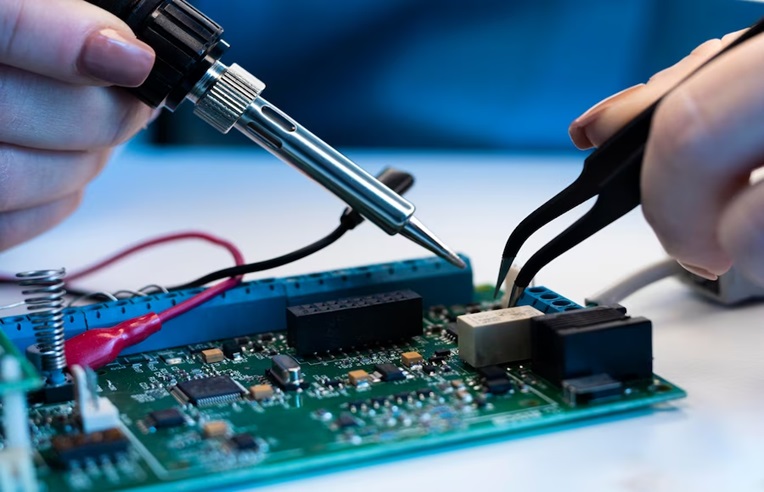IPC 620 Decoded: Best Practices for Ensuring Reliable Electronic Assembly

The IPC 620 standard is a well-known benchmark for cable and wire harness assembly processes. In the rapidly evolving industry of electronic assembly, maintaining a high level of quality and dependability is absolutely necessary. When you enroll for ipc 620 certification course, it gives you instructions and best practices to make sure that electronic assembly is done in an efficient and reliable way.
Understanding IPC 620
The IPC/WHMA-A-620 is the first universally recognized standard for the manufacture and assembly of harnesses. Its extensive list of acceptance criteria can be used by companies producing wire, cable, and harness assemblies. In order to better understand what is intended, what is acceptable, and what is nonconforming, the standard provides examples for each criterion.
Scope of IPC 620
The IPC 620 standard is useful for electronic component makers across many industries. This includes the automotive, aerospace, consumer, and industrial sectors. It can be used as a benchmark for training, inspection, and quality control by original equipment manufacturers (OEMs), EMS providers, and suppliers.
The standard is divided into 19 sections, each of which focuses on a distinct aspect of production. Mechanical assembly, soldering, and crimping are only some of the other techniques that are accounted for in this standard for putting together electronic components.
Benefits of IPC 620
-
Quality Assurance
The IPC 620 standard is the benchmark for cable, wire, and harness assembly. It defines acceptable workmanship in great detail, ensuring that all products and batches of production are of the same high quality. This increases the product’s reliability by decreasing the risk of errors.
-
Cost Savings
Cost cutting follows naturally from improved quality and output. Because of its emphasis on defect prevention, the IPC 620 standard helps businesses save money by cutting down on waste and rework. As output per unit of time rises, unit costs can be reduced.
-
Improved Communication
The IPC 620 standard creates a unified vocabulary for usage by suppliers and manufacturers. The effectiveness of the supply chain as a whole is enhanced by this.
-
Operational Efficiency
The standard provides exhaustive instructions for everything from crimping and soldering to coating. By sticking to these standardized practices, manufacturers may save time and effort, reduce errors, and increase productivity.
Best Practices for Reliable Electronic Assembly
-
Proper Training
Every person who handles an assembled product should be well-versed in the IPC 620 standard. Learning the steps isn’t enough; you also need to understand why they function and the consequences of skipping them.
To ensure that employees have the necessary knowledge and skills, the IPC provides certified training programs. Employees should participate in ongoing refresher courses to ensure they are up-to-date on the latest industry practices and technologies.
-
Regular Inspection
Regular checks are needed to ensure IPC 620 compliance. This includes both periodic inspections and final quality checks. In-process inspections, which offer instantaneous feedback and solutions, are useful for minimizing the cost and impact of errors.
The quality of the completed result is ensured by a last inspection. Using the IPC 620 acceptance criteria throughout these inspections ensures a reliable and consistent assessment of the product.
-
Documentation
A reliable assembly process relies largely on complete documentation of all processes involved. This includes data on raw materials, processing conditions, inspection results, and any modifications that are required.
These records can be used to find patterns in errors, devise preventative measures, and map out future improvements. They provide a level of traceability that is helpful for complying with regulations and keeping customers pleased.
-
Continuous Improvement
Quality is an ongoing process, not a final destination; IPC 620 is only the first step. Consistent evaluations can help identify areas for development.
This can be done by employee polls, research into error trends, and changes in technology or procedure. The goal is to make everyone feel safe enough to offer constructive criticism and participate in making positive improvements.
-
Supplier Management
Suppliers have a significant impact on the consistency and quality of a product. Make sure your suppliers are also adhering to IPC 620 standards.
As part of this procedure, you should regularly evaluate your suppliers, communicate your expectations, and address any issues as soon as they arise. You can ensure the quality of the parts you receive and reduce the number of production faults by exercising tight control over your suppliers.
-
Preventive Maintenance
Regular maintenance is essential for preventing the breakdown of equipment and tools that could cause issues. Cleaning, adjusting, and replacing worn or malfunctioning components are all part of routine maintenance. Regular maintenance increases the efficiency, dependability, and lifespan of a production line.
Conclusion
The IPC 620 standard should be readily available to any business that deals in electronic components. By adopting and adhering to this standard, businesses can boost product quality and reliability, streamline operations, and reduce costs.